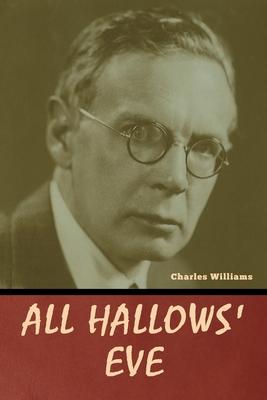All Hallows' Eve is the last of the seven novels of the supernatural written by Charles Williams. Published by Faber and Faber in 1945, it went through three impressions that year and another in 1947. In 1948 it was published in the US by Pellegrini & Cudahy with an introduction by T. S. Eliot. There were two later translations into Italian and Spanish.
Glen Cavaliero has stated that the novels of Charles Williams, of which All Hallows' Eve is the last, move towards "an ever more perfect fusion of natural with supernatural". The magical ceremonies that are meticulously described play a leading role in the plot's development and are not all the product of the author's imagination. T. S. Eliot, in his introduction to the American edition, raises the possibility that some may have been "borrowed from the literature of the occult". Williams had, indeed, once belonged to A. E. Waite's Rosicrucian order, itself one of many offshoots of the Hermetic Order of the Golden Dawn. Waite's order, however, was predominantly directed towards Christian mysticism, although it had its ceremonious rituals.
The magical ceremonies described in the novel are directed by Simon Leclerc in an increasingly desperate effort to subordinate Betty to his will, now that the complication of her love for Jonathan Drayton challenges his influence. The effort to make a final division between Betty's material and spirit bodies fails when Lester substitutes herself. It is a double failure, however, leading to the curtailment of Simon's power. Simon had persisted with his ceremony even when it was plainly not going to work, thus breaking a fundamental rule in magic. His will to dominate increasingly interferes with his clarity of purpose thereafter. The second ceremony involves the creation of the homunculus as a way of removing Lester. Though successful in itself, Simon's contempt for those he manipulates makes him underestimate the power of love. Lester now has a spiritual bond with Betty and also wishes to make amends to her husband; the acquisition of a body, however deformed, is the means by which she can thwart Simon's murderous intention yet again, which his lack of empathy is unable to foresee.
Love and hate are pitted against each other in other ways too. As a child Betty had been secretly christened by her nurse, who had made the Holy Spirit her sponsoring godparent. This is the third ceremony in the novel, described when Betty visits her old nurse with Jonathan. The fourth ceremony is Simon's consequentially foredoomed attempt to destroy Betty by means of a clay figure to which hairs from her brush have been added. In terms of the mechanics of the novel, the mistake made here is allowing ill-will to intrude into what should be a selfless ceremony. It is at this point, as Simon stabs at the image, and then at Betty herself, that the last of his power disappears and the cries of his followers are heard as they discover the cures he performed on them have now been reversed. ... (wikipedia.org)
